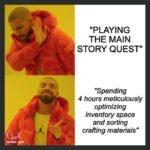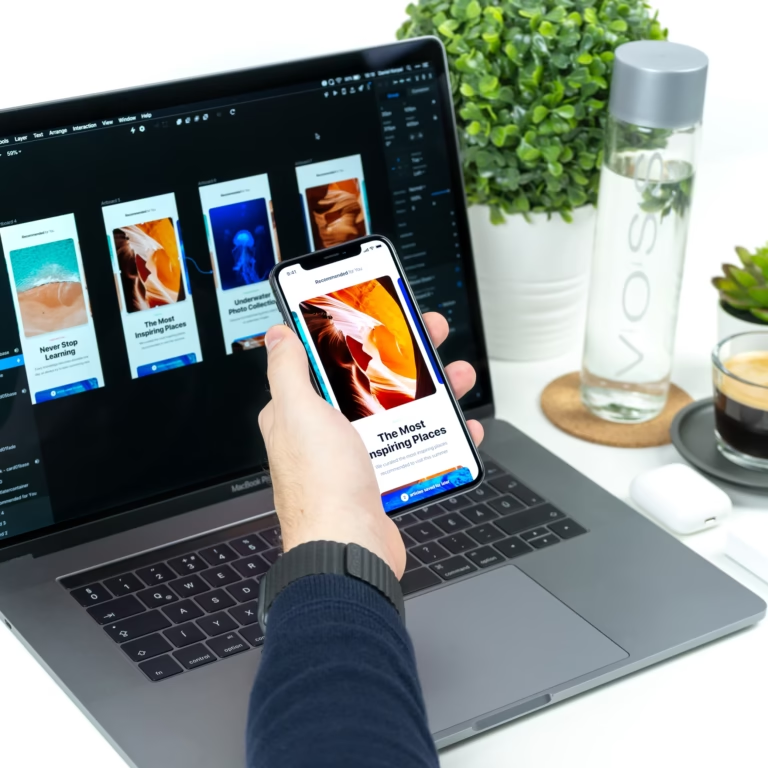
What do talking toasters, immersive AR shopping experiences, and a user interface that knows when you’re hangry have in common? If you guessed “the future of UI design,” congratulations—cue the celebratory Siri confetti. User interfaces are evolving far beyond simple buttons and endless hamburger menus. The next frontier? Seamless, sensory, and empathetic experiences that leave a lasting impression—even if you can’t remember which pocket your phone is in.
If you’re a UI designer, UX enthusiast, or developer worried your skills peaked with the floppy disk “Save” icon, take a deep breath. There’s never been a more thrilling (or challenging) time to be in the field. This blog dives into the trends redefining user interfaces, from voice-activated magic and AI-powered personalization to the rise of 3D elements and beyond. You’ll walk away with practical tips (and maybe a few existential questions) to ensure your portfolio stays future-proof through 2025 and beyond.
Why UI Design Can’t Sit Still Anymore
The days when a bold “Submit” button and some well-placed white space were considered cutting-edge design are long gone. Today’s users expect much more. They want interfaces that adapt to their needs, anticipate their actions, and occasionally surprise them with delightful touches—like a cheerful confetti animation celebrating a small but meaningful achievement. Modern UI design has evolved beyond mere functionality; it’s about crafting experiences that feel human, intuitive, and emotionally intelligent.
As digital interactions grow increasingly complex and immersive, UI designers must think beyond the screen. They need to account for spatial dynamics, emotional impact, and, most importantly, empathy. How does this element make the user feel? Does the interface respond in ways that comfort, excite, or reassure? Great design now goes beyond usability—it connects emotionally and builds trust.
So, what’s next after skeuomorphism, flat design, and minimalist trends? The future of UI design is fluid, playful, and hyper-personalized. It’s about creating digital spaces that don’t just serve a purpose but feel alive—spaces that adapt seamlessly to each individual, encourage them, and respond to their unique needs in the moment. Designers, it’s time to embrace this exciting, human-centered evolution and reimagine what’s possible.
The Power of Listening: Why Voice UI (VUI) Is the Silent Revolution
Alexa, Are You the Next Big Thing in UI Design?
Hands full of cookie dough and need to set a timer? Just ask. Voice UI (VUI) is quietly transforming the way we interact with technology by making tasks more convenient and accessible, even when our hands are busy. From controlling smart home devices to ordering groceries, VUI is reshaping everyday tasks with ease. It’s not just about smart speakers anymore—voice technology is being integrated into unexpected devices like microwaves and refrigerators, bringing hands-free functionality to a whole new level. Could this be the future of interface design? It certainly seems that way.
Why Should UI Designers Care About Voice?
- Accessibility. VUI bridges gaps for users with disabilities and anyone with hands otherwise occupied (parents, bakers, the perpetually clumsy).
- Frictionless Flow. When crafted well, VUI creates seamless multi-tasking. No more tabbing, no more scrolling, just talk-to-do.
- Real Example. Look at how Google’s NotebookLM and Apple’s Siri are evolving. Gradients, dynamic feedback, and even a friendly tone hint at AI’s presence behind the pixels.
Challenges and Tips
- Feedback Loops. Users need cues (“I heard you!”) even if they never touch a button. Use subtle audio, animated gradients, or haptic feedback as cues.
- Context-Awareness. Avoid the “Sorry, I didn’t get that” spiral. Train interfaces to anticipate, clarify, and learn.
Pro Tip
If you’re prototyping VUI for a web or app project, add micro-interactions like expressive emojis or playful text transitions to signal “I’m listening”… or “Oops, I’m thinking.” The more human, the better.
UI That Jumps Out at You: The Rise of AR & VR Interfaces
Because Flat Screens Are SO 2020
Wish your design portfolio was three-dimensional, or your shopping experience felt more like the immersive world of Animal Crossing? Augmented reality (AR) and virtual reality (VR) are transforming traditional screens into interactive doorways. From virtual showrooms to hands-on product demos, these technologies are redefining how we create, shop, and experience the digital world.
Why Is AR/VR the Future—for Real?
- Immersive Brand Storytelling. 3D objects and environments deepen engagement. Think about the IKEA Place app. Point, scan, and floop a sofa lands in your living room at scale.
- Spatial Design. Interactions live in your environment, not just your device.
- Bento Grids & Progressive Blurs. User-friendly layouts and animated blurs help blend digital with reality, guiding focus and minimizing overwhelm.
Emerging Trends to Watch
- Highly Detailed Illustrations & Metal Shaders. The more tactile and “real,” the deeper the connection.
- Modern Skeuomorphism. Forget flat icons. We now want digital knobs that look like they will click, snap, or twist.
- Spatial Audio. UX Studio’s projects emphasize layered, directional sound to make navigation intuitive.
Designing for AR/VR Without Losing Your Mind
- Prioritize onboarding. Give users small tutorials or cues (pop-up tips, highlighted paths).
- Focus on accessibility. AR isn’t just for the sighted and steady-handed.
- Test across lighting, device, and distraction conditions. Because your user’s cat will walk on the headset.
No-Code/Low-Code Platforms: Power to the Prototypes, People
Drag, Drop, Deploy (Coffee Optional)
Remember when coding from scratch was the only way to build a functional interface? Those days are fading fast, thanks to No-Code and Low-Code platforms revolutionizing the way we create. These tools are democratizing UI design, empowering designers—and even their slightly tech-phobic friends—to turn ideas into reality with ease. Now, anyone can ideate, prototype, and deploy sophisticated, professional-grade interfaces with just a few clicks, no extensive coding knowledge required. Whether you’re building a website, an app, or a digital tool, these platforms are making development faster, more accessible, and a lot less intimidating.
What’s Driving Their Explosion?
- Velocity. Build and test ideas faster than you can say “npm install.”
- Collaboration. Bridge gaps between design, dev, and marketing. Everyone throws sticky notes at the same virtual wall.
- Emerging Examples. Whether it’s Webflow, Bubble, or Figma’s auto-layout features, UI designers are free to tinker live and gather stakeholder feedback early.
The Double-Edged Sword
- Customization vs. Control. With great modularity comes… the risk of cookie-cutter sameness.
- Integration. Low-Code tools are best as starting points, but scalable products may still need classic code for depth.
Tip for the Trailblazers
Stand out by integrating advanced features, AR content, or personalized layouts on these platforms. Use them to prototype, then polish with custom code when you’re ready to ship.
Personalization & AI in UI: Your Interface, Your Story
Step Aside, One-Size-Fits-All
There’s a reason Spotify feels like it knows your Monday moods—it’s all thanks to AI-driven personalization. By analyzing your preferences, habits, and even the time of day, AI transforms generic interfaces into tailored experiences. This technology is turning static, one-size-fits-all designs into dynamic, interactive conversations that feel uniquely yours, creating deeper connections between users and the platforms they love.
What’s Actually Happening Here?
- AI Interfaces & Gradients. Tools like NotebookLM signal AI’s presence with subtle UI cues (animated gradients, personalized greetings, even voice tones). Users know—not guess—that an AI is in the loop.
- Adaptive Layouts. Bento grids, detailed illustrations, and text/emoji blends serve up the right experience… at the right moment. That means switching themes, suggesting help, or even just tossing in a 🌈 when you nail a task.
- Empathetic Design. Imagine an interface that senses user frustration (rage clicks, frantic scrolling) and adapts. That’s not just possible, it’s becoming expected.
How to Level Up Your Personalization Game
- Use progressive disclosure. Don’t unload a UI firehose; reveal complexity as needed.
- Blend emoji with text for clarity and tone. Yes, even for “serious” apps. Your mortgage tracker can absolutely use a smiley.
- Incorporate AI-generated illustrations or adaptive art for unique, engaging visuals.
UI Design in 2025 and Beyond: Immersive, Adaptive, Empathetic
As we move deeper into 2025, UI design is entering a new era—one where interfaces feel less like rigid machines and more like intuitive, helpful collaborators. The focus is shifting beyond basic usability; today’s goal is to craft experiences that feel natural, human, and seamlessly integrated into everyday life. Designers are no longer just building tools—they’re creating environments that foster meaningful interactions between users and technology.
The best interfaces are immersive, bridging the gap between digital and physical worlds with innovations like augmented reality and advanced haptics. They are adaptive, evolving alongside user behaviors and preferences, leveraging AI and real-time data to personalize every interaction. And perhaps most importantly, they are empathetic, understanding user needs with remarkable nuance by anticipating challenges and intelligently responding to individual contexts. This new wave of design is not just about functionality—it’s about creating experiences that feel alive and truly user-centric.
Quick Trends Checklist for the Next-Gen Designer
- Interactive 3D Objects: These objects not only captivate users visually but also encourage deeper interaction with your interface, making storytelling more immersive and engaging. Perfect for apps and websites that want to stand out.
- AI-generated Visual Cues: By incorporating intelligent systems, interfaces become smarter, more intuitive, and highly responsive to user needs, creating a seamless and personalized experience for every individual.
- Text & Emoji Mixes: This approach helps create a sense of relatability and accessibility, making your design more inclusive and appealing to a diverse, global audience. Emojis bring tone and emotion to text, bridging the gap between formal and casual.
- Animated Text Transitions: These transitions not only improve functionality and user flow but also add a layer of delight and polish, making your design feel fluid, modern, and engaging.
- Progressive Blurs and Bento Grids: These techniques blend modern aesthetics with usability, ensuring clarity and focus while maintaining a sleek, cutting-edge look that appeals to users.
- Modern Skeuomorphism, Detailed Illustrations, and Spatial Design: Combine the best of tactile design principles with intricate, high-quality illustrations and thoughtful spatial layouts. Modern skeuomorphism brings a sense of familiarity and realism, while spatial design adds depth and organization to interfaces, creating a digital experience that is not only functional but also visually memorable and innovative.
These trends don’t just look good—they’re about creating designs that adapt to the user’s world, meeting them where they are and making their experience better at every touchpoint.
Looking for more inspiration, practical guidance, and peer-validated best practices? UX Studio Team offers a wealth of case studies, services, and UX wisdom to fuel your design journey. Whether you’re tackling your first project or refining a sophisticated system, their resources can help turn your vision into reality. Let’s shape the future of UI design together!
Make Tomorrow’s UI Today
Future-ready UI design asks you to listen, experiment, and never get too comfy with the current meta. Whether you’re prototyping in a no-code platform, mixing emoji into interface text, or running user tests on virtual reality interfaces in your living room, keep one eye on what’s next and the other on empathy.
And yes, in case you’re wondering, the toasters will talk back someday. Try not to burn your bagel.
Keen to ride the UI wave before it crests? Check out the UX Studio Team blog and see how leading brands are turning futuristic dreams into today’s most delightful user experiences.







0 Comments